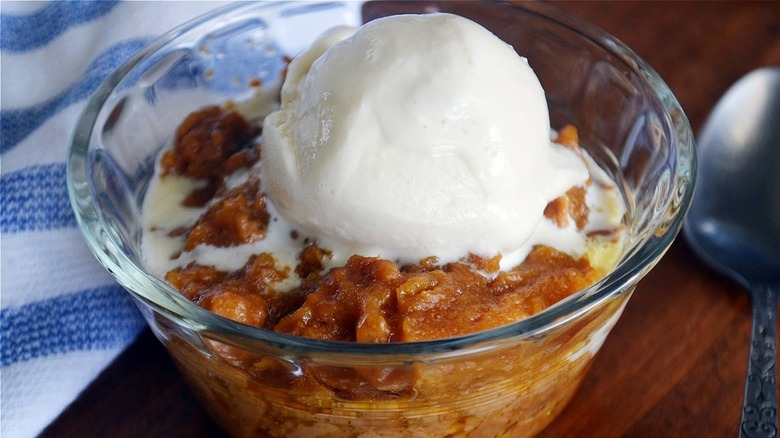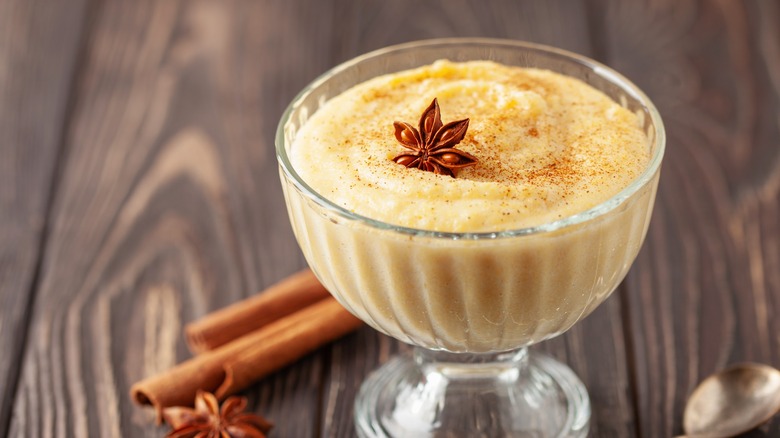What A Thanksgiving Hasty Pudding Really Means
While the Thanksgiving turkey might take over the center of the table, many guests can't wait for the dessert course. From Grandma's pie to the infamous piecaken, the final bite of the meal often leaves a lasting impression. But one traditional dessert might not be quite as trendy. Even though Yankee Doodle Dandy sings of that hasty pudding, it isn't the most likely dessert on the holiday table.
Eater offers a robust explanation about hasty pudding, its origins, and its connection to the Thanksgiving holiday. Basically, the rustic dish is a warm porridge made from cornmeal or wheat flour, often topped with ice cream or whipped cream. Recipes date back to the 1600s, but the dish is often associated with colonial times.
The American version is often made with cornmeal and sometimes has additional ingredients, such as raisins, eggs, and other spices. While home cooks have taken to customizing the dish, the simplicity of the recipe makes it a classic comfort food.
Where would guests find a Thanksgiving hasty pudding on the table?
For home cooks who want to bring part of the holiday meal back to the Mayflower, the Thanksgiving hasty pudding is the tasty choice. According to Insider, the simple dessert is a New England favorite. Although recipes vary, hasty pudding generally features grains, spices, molasses, and brown sugar.
New England Today discusses the regional version of this dessert, which evolved from the savory British porridge into one influenced by Native American ingredients and accessibility to sugar and spices. Although the name might assume that the dessert is made quickly, the truth is the opposite. It's cooked slowly at a low temperature in a water bath.
Because many recipes incorporate warm, fall spices, home cooks can add their spins on the simple porridge. From a dusting of cinnamon on top of the whipped cream to a salted caramel ice cream, there are many ways to reimagine hasty pudding for the modern holiday table.

